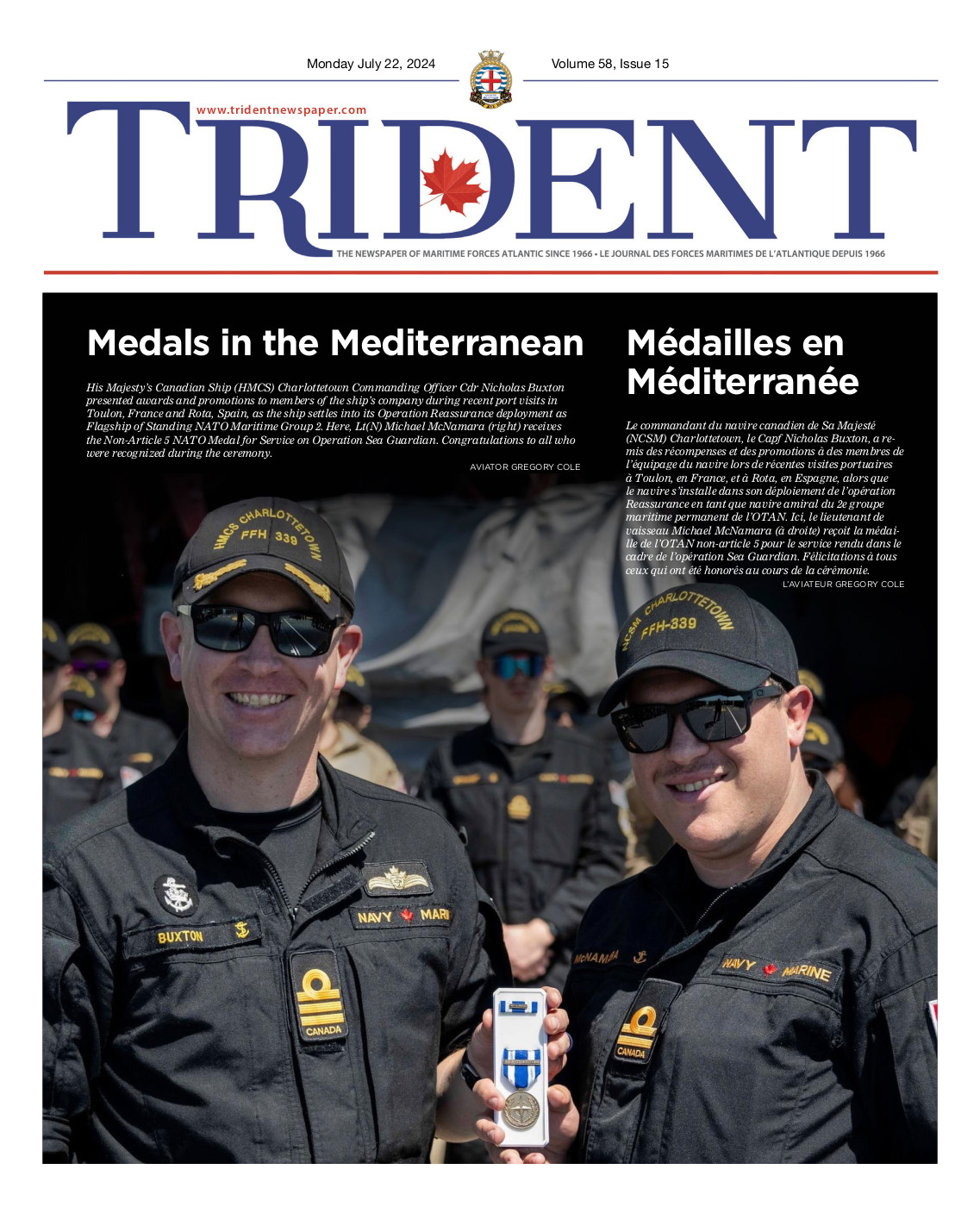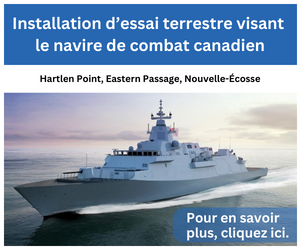
Photo: Mass Communication Specialist 1st Class Brian G. Reynolds, US Navy
Submarine celebrates achievements in the Asia-Pacific region
By Darlene Blakeley,
Senior Editor and Writer, Navy Public Affairs
Her Majesty’s Canadian Submarine (HMCS) Chicoutimi, has piled up a lot of firsts on its lengthy deployment to the Asia-Pacific region.
It’s the first time a Victoria-class submarine has deployed from the Royal Canadian Navy (RCN) to the region; been deployed for so long – nearly 200 days; participated in the previously bilateral ANNUALEX with the U.S. Navy (USN) and the Japanese Maritime Self-Defence Force (JMSDF); and made port visits to Yokosuka and Sasebo, Japan and Guam.
It’s also the first time a Victoria-class submarine has undertaken a large-scale deployed maintenance activity conducted by personnel from Maritime Forces Pacific (MARPAC) and Fleet Maintenance Facility Cape Breton (FMFCB) in Japanese ports – all while Super Typhoon Lan raged around them.
“It has been a phenomenally successful deployment,” says Capt(N) Chris Robinson, Commander of the Canadian Submarine Force.
Chicoutimi,, under the command of Commander Stephane Ouellet, left its home base in Esquimalt, B.C., in early September last year. Its simply stated mission was to “support Canada’s global engagement strategy through strategic partnerships, port visits and operational interactions.”
But it has been anything but simple. Over the course of several months, Chicoutimi, conducted intelligence, surveillance and reconnaissance; carried out seven interactions with the USN, JMSDF, the French Navy, the Royal Air Force and the Royal Australian Air Force; operated with more than 20 surface ships and 50 aircraft; and conducted more than 180 hours of submarine-on-submarine engagements.
The success of this hectic tempo is a testament to the crew, according to Capt(N) Robinson, who says they worked hard and overcame challenges prior to deploying. In particular he mentions the unexpected swapping out of the submarine’s main battery last May.

Photo: RCN
“The battery, the lifeblood of a submarine, was functioning below performance specifications,” Capt(N) Robinson explains. “Normally we have to take a submarine out of the water to change batteries, but this time we were able to do it safely in the water thanks to the expertise of FMFCB. It enabled us to get back to work much more quickly.”
One of the highlights of Chicoutimi,’s tour has been the ability to gain a greater understanding of the challenges facing the deployment of a Victoria-class submarine to a distant, strategically important area.
“We had very complex logistic and maintenance arrangements with partner nations that we navigated throughout the deployment,” says Capt(N) Robinson. “We gained a much better understanding within the RCN of the multi-faceted logistical arrangements needed when supporting a deployed submarine.”
Successful routine maintenance was carried out in Japanese ports, with USN support. More than 30 personnel from FMFCB conducted over 1,800 hours of maintenance in eight days. Additionally, there was a month-long maintenance period in Guam, the first deployed submarine short-work period ever conducted by MARPAC and FMFCB. During this time significant repairs were made to fridge and hydraulic plants, diesel engines and motor generators.
Capt(N) Robinson is quick to praise both FMFCB and a deployed joint logistic coordination cell from Esquimalt.
“They provided stellar support in moving both parts and people,” he says. “They also overcame significant challenges in moving military gear in and out of Japan. This has enabled us to learn valuable lessons for future deployed submarine work periods.”
Capt(N) Robinson says one of the most rewarding aspects of the deployment has been building relationships with both the USN and the JMSDF.
“These strategic partnerships are built on trust and experience working together in major ways,” he says.
Chicoutimi, developed increased interoperability with the USN’s Seventh Fleet and forged strong bonds with the JMSDF. For the first time a Canadian submarine participated in ANNUALEX, normally a bilateral exercise between the USN and JMSDF. It is carried out every year in the Southern Sea of Japan to practise and evaluate the coordination, procedures and interoperability elements required to effectively respond to the defence of Japan or to a regional contingency in the Indo-Asia-Pacific.
“This was a major achievement and a real manifestation of Canada’s defence policy ‘Strong, Secure, Engaged’,” Capt(N) Robinson explains. “It represents a clear indication of the RCN’s commitment to peace and security in the region, and shows that our navy is fully engaged and able to project sea power far from Canada’s shores.”
Chicoutimi,’s prowess did not go unnoticed by the USN. “Chicoutimi, has provided exceptional support for the 7F (Seventh Fleet) team during the past few months and I sincerely appreciate all of the work to make its deployment happen. Hopefully 2018 will bring even more,” says VAdm Phillip Sawyer, Commander of the Seventh Fleet.
Over the course of this historic deployment, the 59 crewmembers have been exceptionally busy. They have been able to qualify 50 per cent of new submarine crew and progress several higher level qualifications, all while conducting operations.
“Through it all the crew has been enthusiastic and morale has been very good,” says Capt(N) Robinson. “The families back home have also been incredibly supportive of this long deployment.”
Unlike surface ships, submarines have no way to communicate with family and friends while submerged, except through coded familygrams once a week.
“This is always a challenge,” says Capt(N) Robinson. “There is no phone and no internet while the boat is under water.”
During port visits communications can take place as usual, and families can also get information through the Military Family Resource Centre in Esquimalt.
As Chicoutimi, arrives home, crewmembers are looking ahead to some time off before the submarine continues operations later this year.
“They can take great pride in knowing that they have contributed to maritime peace and good order abroad by patrolling, building strategic relationships and interacting with our partner nations,” says Capt(N) Robinson. “It has been an exceptional deployment on so many levels.”





